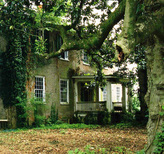 Click image to enlarge.
Click image to enlarge.
 Click image to enlarge. Click image to enlarge. Sweetwater is one of the state's true gems. A stately Federal Period brick home that bears a strong resemblance to its Virginia antecedents, it also features fine interior woodwork, including marble mantels and silver doorknobs. Gen. John Brahan, a War of 1812 veteran, began construction in 1828. The house was completed after his death by his son-in-law Robert Patton in 1835. In the turbulent months following the end of the Civil War, Patton was elected Alabama's governor in December 1865. He served until removed by military order in July 1867. The house is now surrounded by one of Florence's rapidly developing commercial areas and is in need of restoration.
0 Comments
Tumlin Gap Railroad Tunnel and Trestle, Altoona, Etowah County, 1899-1903 (Places in Peril 2001)10/22/2001 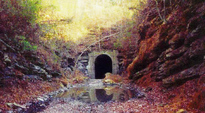 Click image to enlarge. Click image to enlarge. Constructed from 1899 to 1903 by the L&N Railroad, the tunnel and trestle are exceptional early twentieth-century examples of industrial engineering skill. At approximately 1,920 feet in length, the tunnel is the longest in Alabama and features concrete headwalls at each end. The trestle is 350 feet long and spans a height of approximately seventy to eighty feet. Following a grant to convert the old railbed and tunnel into a Rails-to-Trails pathway, local landowners contested the transfer of the property, and the court ruled in favor of the landowners. The owners of the tunnel have partially blocked it up to prevent access, which is also preventing rainwater from draining out. 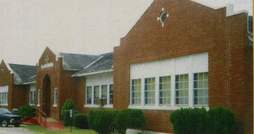 Click image to enlarge. Click image to enlarge. With a U-shaped plan and Colonial Revival stylistic elements, the one-story brick former Colbert County Training School is a sturdy reminder of progressive African-American educational opportunities during the era before integration. Completed in 1929 utilizing monies from the Julius Rosenwald Fund, its prominent alumni include entertainer Percy Sledge. The school served several generations of students until it closed in 1970. T he following year the building was reopened as the Leighton Middle School. That school closed following the end of the 1993-94 school years, and since that time the building has been badly vandalized. 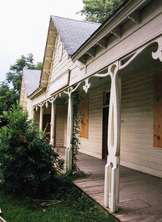 Click image to enlarge. Click image to enlarge. Built in 1844 by Virginia native John Glascock (1817-1897), this house is one of three remaining examples in Tuscaloosa of the Gothic Revival style and one of only approximately three dozen antebellum buildings left in Tuscaloosa. It features handsome cutwork and pointed arch windows, as well as original interior details. Glascock was a cousin of statesman and unsuccessful presidential candidate Henry Clay, who reputedly stayed in the house on several occasions. The area is primarily commercial, and the house would make an excellent potential rehabilitation tax credit project. To date, it has been on the market for over a year with no offer. |
Alabama's Endangered Historic LandmarksEach year since 1994, Alabama Heritage has highlighted threatened historic sites throughout Alabama. The “Places in Peril” list has identified more than 215 imperiled historic resources throughout the state, and is compiled by the Alabama Historical Commission and the Alabama Trust for Historic Preservation. The locations highlight the results of deferred maintenance, perceived obsolescence, development pressures, and lack of funding—forces that now more than ever threaten our cultural legacy. But awareness is a powerful force, too, and can cultivate a renewed determination to be responsible stewards of our heritage. For more information, visit the AHC or the ATHP websites. Alabama Heritage is proud to bring to you a selection of the places designated as perilous. Please keep your comments to information relevant to the featured place in peril. Alabama Heritage reserves the right to delete any comment that we deem inappropriate. Archives
May 2024
|
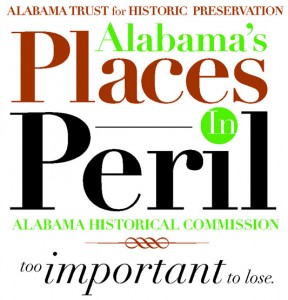
 RSS Feed
RSS Feed